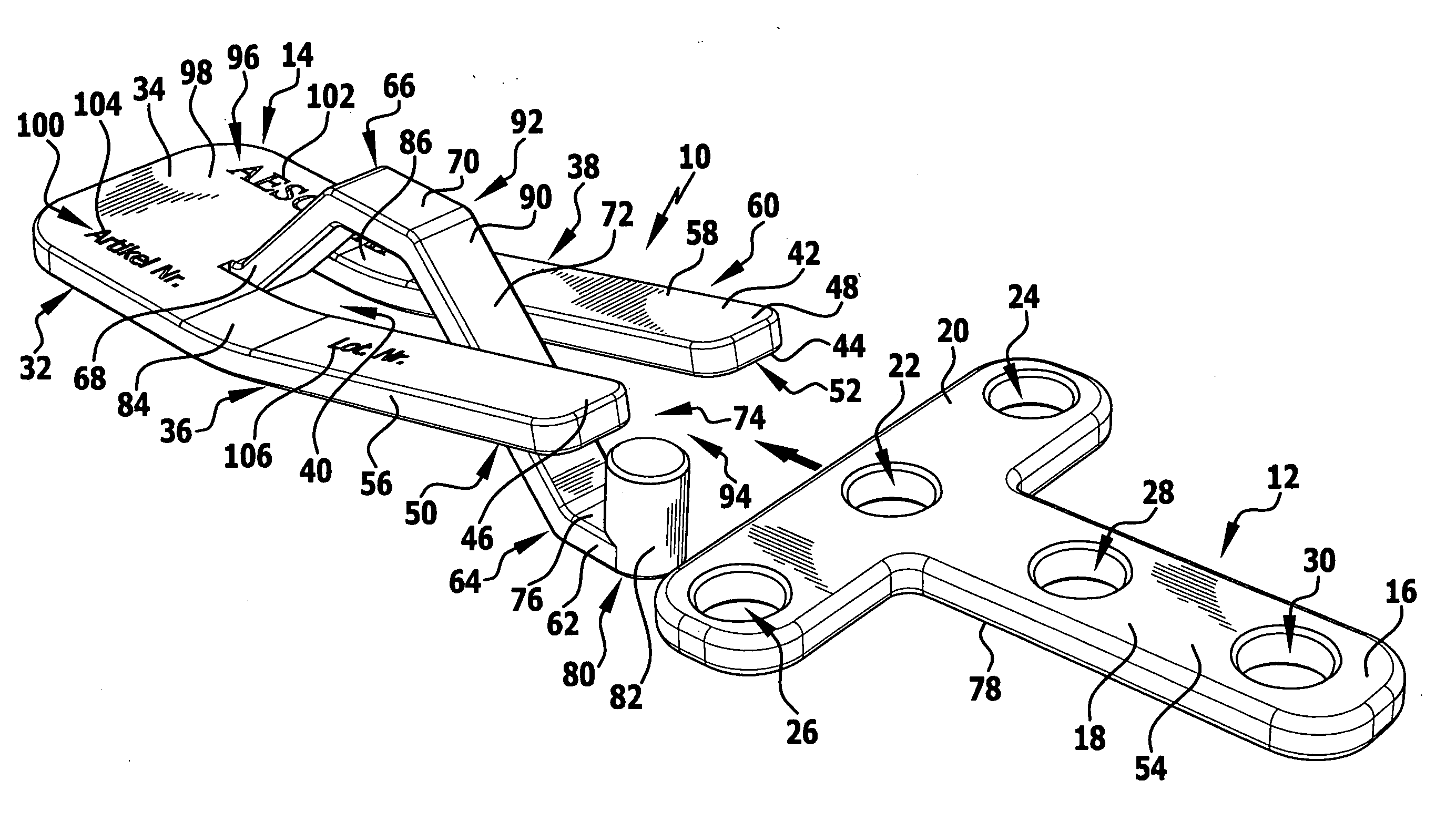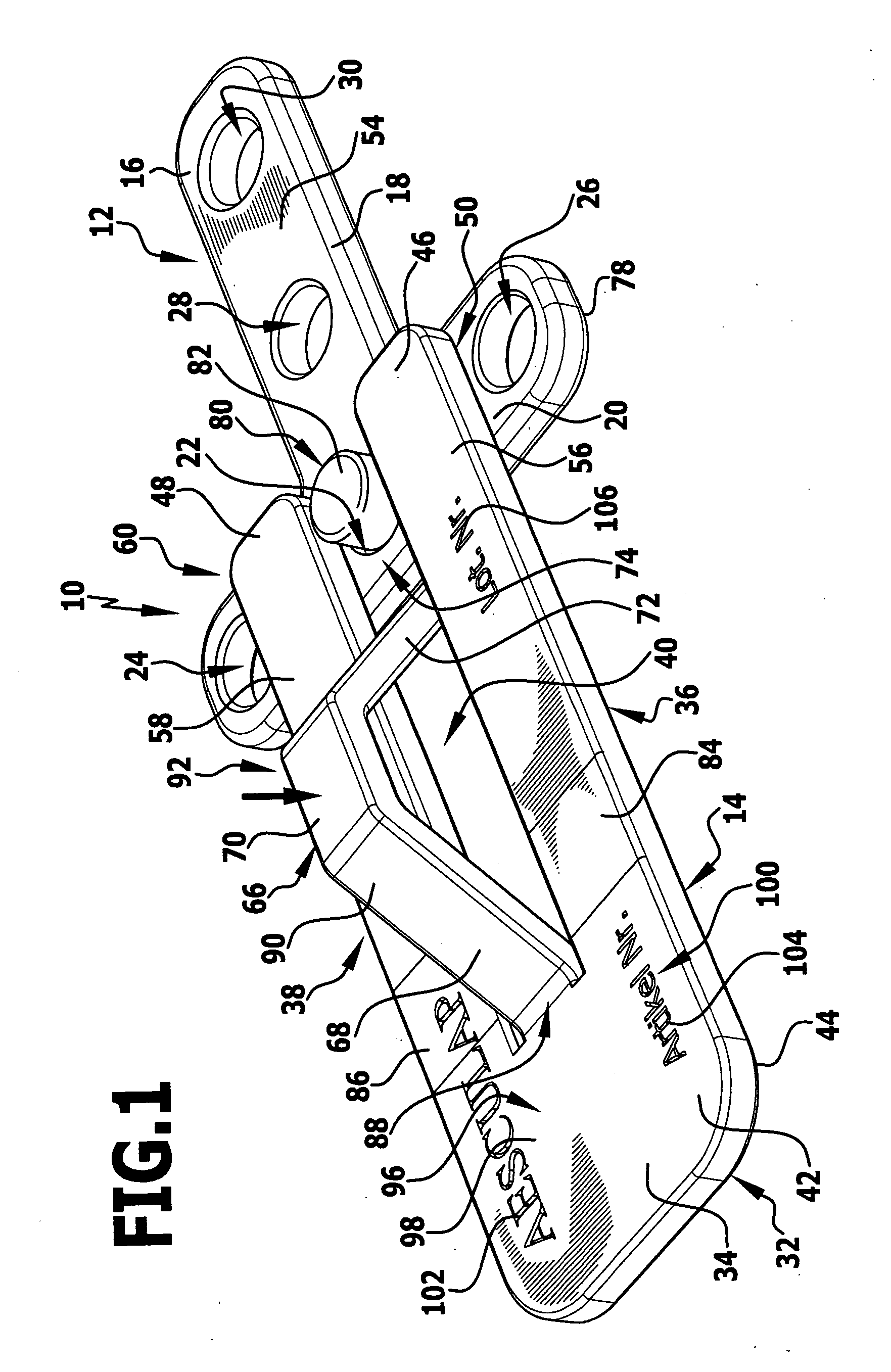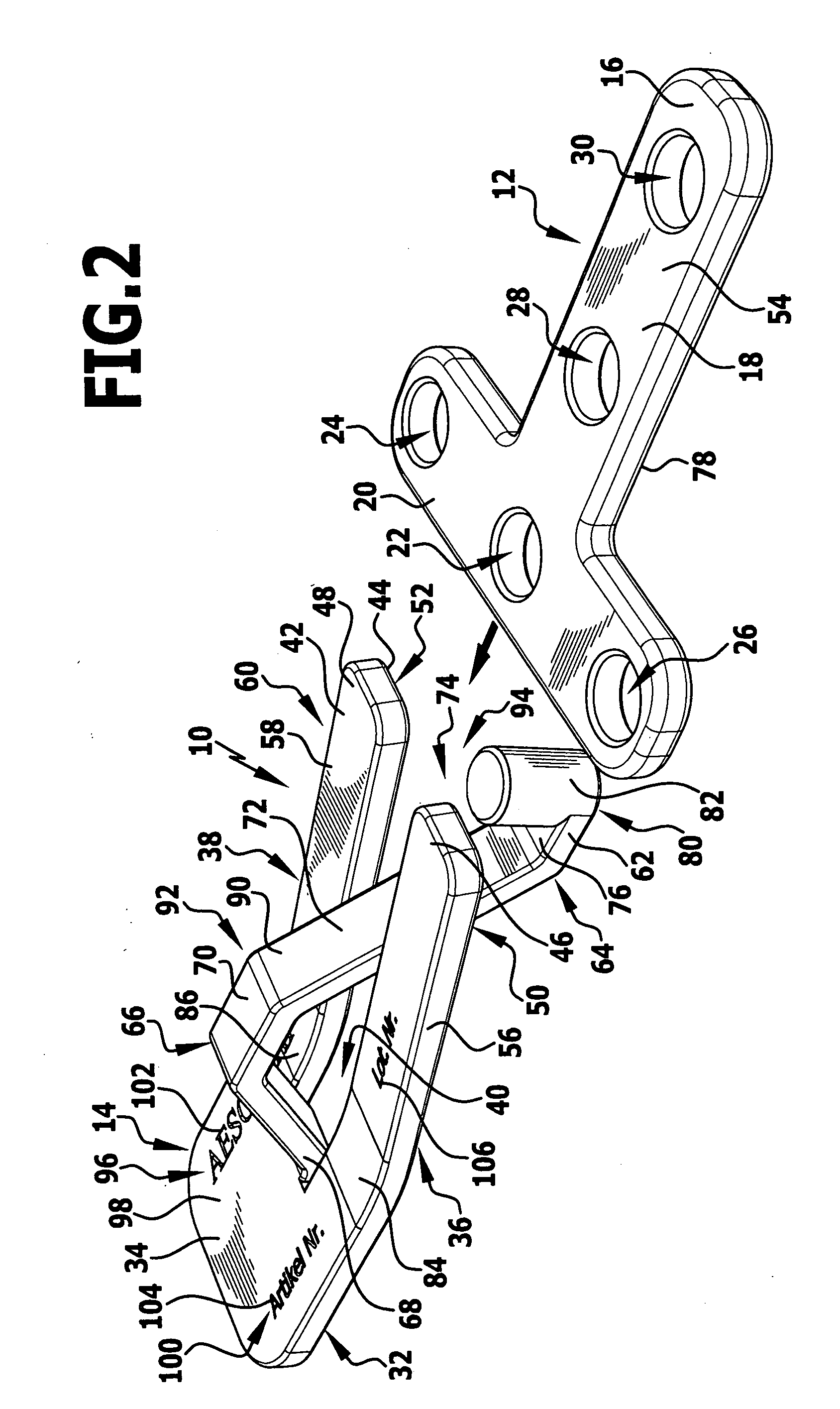Surgical data carrier
a data carrier and surgical technology, applied in the field of surgical data carriers, can solve the problems of difficult grasp by users, relative movement of data carriers and implants, etc., and achieve the effect of reducing the risk of infection for patients as a result of data carriers remaining in the body, and reducing the risk of infection for patients
- Summary
- Abstract
- Description
- Claims
- Application Information
AI Technical Summary
Benefits of technology
Problems solved by technology
Method used
Image
Examples
Embodiment Construction
[0059]A preferred embodiment of an implantation system according to the invention is given the reference numeral 10 in the drawings. The implantation system 10 comprises a medical implant 12 as well as a preferred embodiment of a surgical data carrier 14 likewise according to the invention.
[0060]The implant 12 is designed as a surgical perforated plate 16 produced from titanium for the connection of bones and / or bone fragments. The perforated plate has the shape of a T with a longitudinal section 18 which corresponds to the long stroke of the T as well as with a transverse section 20 which is arranged at one end of the longitudinal section 18, is aligned at right angles to it and corresponds to the cross stroke of the T. A plurality of screw holes 22, 24, 26, 28 and 30 in the form of passages in the longitudinal section 18 and the transverse section 20 can have securing means which are not shown in the drawings, such as, for example, bone screws, passing through them in order to att...
PUM
 Login to View More
Login to View More Abstract
Description
Claims
Application Information
 Login to View More
Login to View More - R&D
- Intellectual Property
- Life Sciences
- Materials
- Tech Scout
- Unparalleled Data Quality
- Higher Quality Content
- 60% Fewer Hallucinations
Browse by: Latest US Patents, China's latest patents, Technical Efficacy Thesaurus, Application Domain, Technology Topic, Popular Technical Reports.
© 2025 PatSnap. All rights reserved.Legal|Privacy policy|Modern Slavery Act Transparency Statement|Sitemap|About US| Contact US: help@patsnap.com



